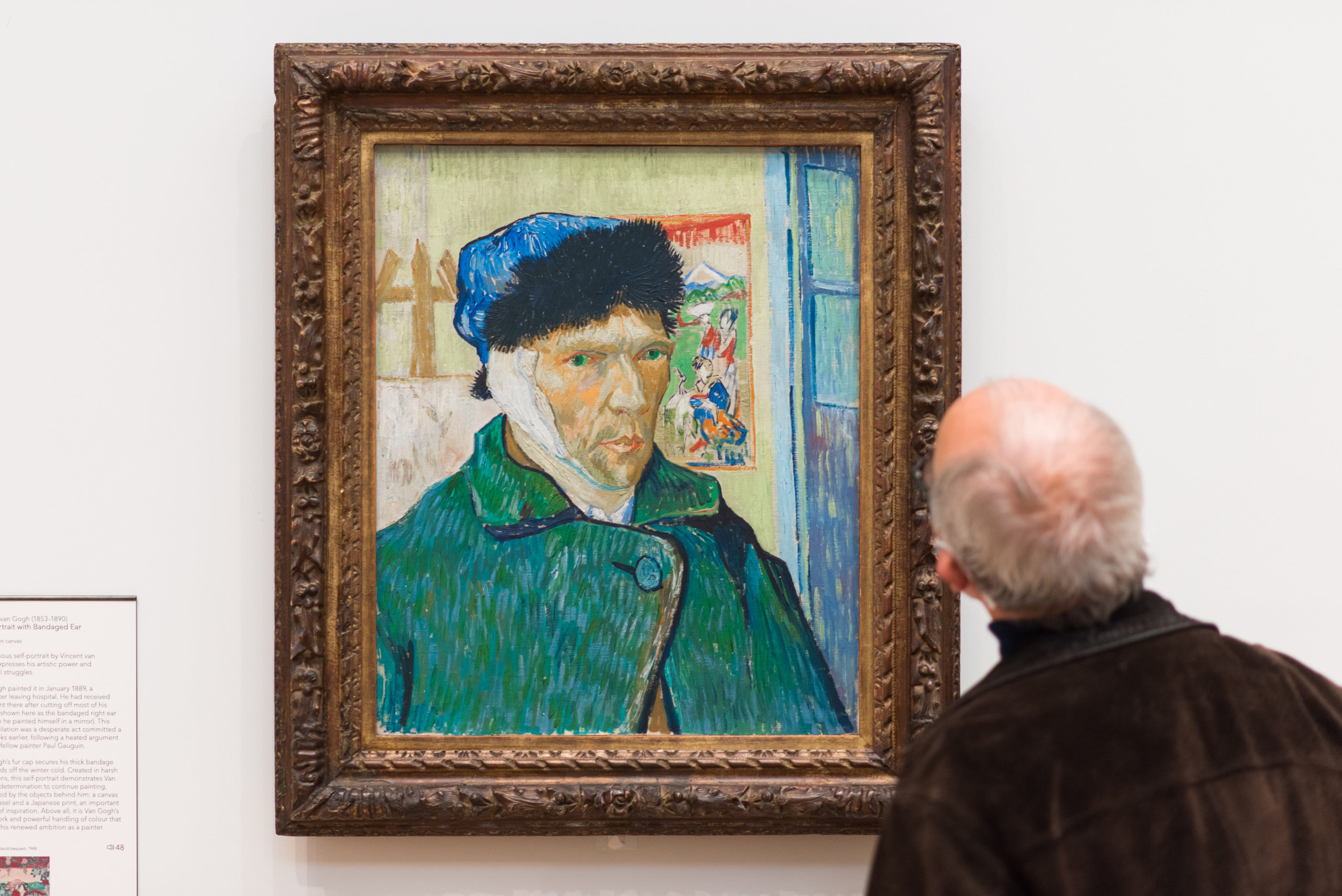Courtauld Gallery reopening: Somerset House museum ‘looking better than ever’
Gallery now open to the public after closing in 2018 for a £57m refurbishment

“When the Courtauld Gallery closed in 2018 for renovation, I feared it might lose the atmosphere that made it one of the most unique London museums,” said Ben Luke in the London Evening Standard. “But it’s looking better than ever, with a perfectly judged renovation.”
This remarkable collection, established by the textile magnate Samuel Courtauld and his wife Elizabeth in 1932 and displayed in Somerset House, groans with masterpieces – paintings by the likes of Bruegel, Botticelli and Rubens, as well as one of the most spectacular troves of impressionist and postimpressionist art in the world.
Yet for all its charms, the Courtauld did not always show its art “in the best way”: the pictures were hung clumsily, the gallery layout was awkward and it was a “nightmare” for people with disabilities.
The Week
Escape your echo chamber. Get the facts behind the news, plus analysis from multiple perspectives.

Sign up for The Week's Free Newsletters
From our morning news briefing to a weekly Good News Newsletter, get the best of The Week delivered directly to your inbox.
From our morning news briefing to a weekly Good News Newsletter, get the best of The Week delivered directly to your inbox.
Now, thanks to a £57m refurbishment, that has all changed. The renovations have opened up what were once cluttered spaces into a coherent whole, while the lighting and decor have been made dramatically more sympathetic to the paintings. And what paintings they are: from magnificent medieval and early Islamic works to van Gogh’s Self Portrait with Bandaged Ear (1889), and “superb” pieces by modern masters including Cy Twombly and Philip Guston, it offers “one jaw-dropping moment after another”.
Reacquainting oneself with the treasures of the Courtauld is almost “too much”, said Adrian Searle in The Guardian. “Surprises at every turn keep you alert and keep you looking”, whether at a “slightly mad” 1550 portrait of an English Naval officer or at Cezanne’s The Card Players (1892-1896); at the “hall of mirrors and reflections” in Manet’s epochal A Bar at the Folies-Bergère (1882) or at Cranach’s Adam and Eve (1526). You’re constantly reminded of the collection’s impressive “historical sweep and variety”.

The refurb itself has been carried out with the utmost subtlety, said Rowan Moore in The Observer. Indeed, it’s so subtle that at times it’s hard to see quite what all those millions actually bought. There are, though, occasional slips: the staircases have been fitted with “crude white rectangular light fittings” of the sort you might find in “a cheap hotel”, while the gallery’s glorious medieval works of art are “consigned to a cramped and low-ceilinged room”.
Much of the old Courtauld’s idiosyncratic charm has been sacrificed, making it feel much more like an ordinary museum, said Waldemar Januszczak in The Sunday Times. But the new, broadly chronological hang is easier to follow: some masterpieces that were previously hidden away are given “pride of place”, such as Botticelli’s “great altarpiece” The Trinity with Saints Mary Magdalen and John the Baptist.
A free daily email with the biggest news stories of the day – and the best features from TheWeek.com
Elsewhere, two dozen Rubens paintings that were once scattered piecemeal throughout the galleries are given a well-deserved room to themselves. Best of all is the new impressionist and postimpressionist gallery, where we get “a wall full of superb Cézannes”; a selection of some fine Gauguins, including the “haunting” Nevermore (1897); “exceptional” Seurats; and “heartbreaking” van Goghs.
It may not be perfect, but the Courtauld’s makeover is “unquestionably a success”. This well-kept secret is now likely to become a major tourist attraction. “So, yes, a lot has been gained. But a little has also been lost.”
Courtauld Gallery, Somerset House, London WC2 (020-3947 7777, courtauld.ac.uk). Now open to the public
-
 Political cartoons for January 4
Political cartoons for January 4Cartoons Sunday's political cartoons include a resolution to learn a new language, and new names in Hades and on battleships
-
 The ultimate films of 2025 by genre
The ultimate films of 2025 by genreThe Week Recommends From comedies to thrillers, documentaries to animations, 2025 featured some unforgettable film moments
-
 Political cartoons for January 3
Political cartoons for January 3Cartoons Saturday's political cartoons include citizen journalists, self-reflective AI, and Donald Trump's transparency
-
 The ultimate films of 2025 by genre
The ultimate films of 2025 by genreThe Week Recommends From comedies to thrillers, documentaries to animations, 2025 featured some unforgettable film moments
-
 Into the Woods: a ‘hypnotic’ production
Into the Woods: a ‘hypnotic’ productionThe Week Recommends Jordan Fein’s revival of the much-loved Stephen Sondheim musical is ‘sharp, propulsive and often very funny’
-
 The best food books of 2025
The best food books of 2025The Week Recommends From mouthwatering recipes to insightful essays, these colourful books will both inspire and entertain
-
 Art that made the news in 2025
Art that made the news in 2025The Explainer From a short-lived Banksy mural to an Egyptian statue dating back three millennia
-
 Nine best TV shows of the year
Nine best TV shows of the yearThe Week Recommends From Adolescence to Amandaland
-
 Winter holidays in the snow and sun
Winter holidays in the snow and sunThe Week Recommends Escape the dark, cold days with the perfect getaway
-
 The best homes of the year
The best homes of the yearFeature Featuring a former helicopter engine repair workshop in Washington, D.C. and high-rise living in San Francisco
-
 Critics’ choice: The year’s top 10 movies
Critics’ choice: The year’s top 10 moviesFeature ‘One Battle After Another’ and ‘It Was Just an Accident’ stand out